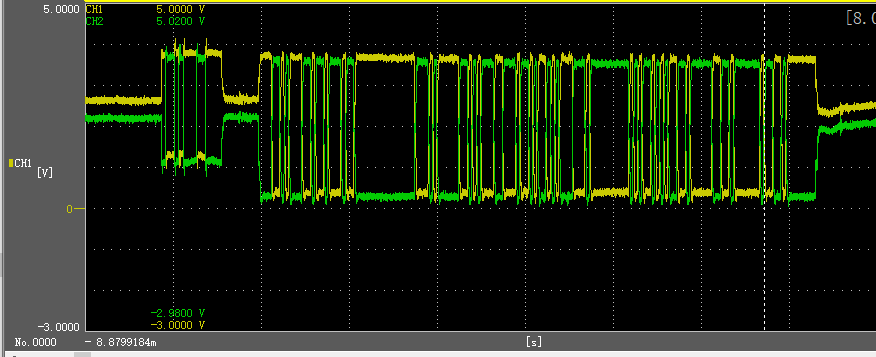Other Parts Discussed in Thread: TIDA-01630
HI!Hello everyone
We use SN65hvd3088ed to realize RS485 communication with tamakawa encoder.Communication baud rate is 2.5M.We need to evaluate the impact of cable length on communication quality. We hope that through the test, we can know the maximum communication distance of our system using the current cable.Tida-010026 describes that communication quality can be evaluate the quality of atransmitted signal through Eye Diagram, but our oscilloscope does not have Eye Diagram function. Can we analyze it through VA and VB waveforms?
We built the test system, as shown in the figure below.
1.Signal waveform of 10 meter cable at encoder end
2.Signal waveform of 50m cable at encoder end
The purple line in the figure below is VA-VB
3.Signal waveform of 50m cable at SN65hvd3088
The purple line in the figure below is VA-VB
4.Summary
The signal waveform is seriously distorted when the cable is long.
The waveform is different at the encoder or at chip 3088.
VA-VB is more than 200mV
How can we evaluate the stability margin of communication.







